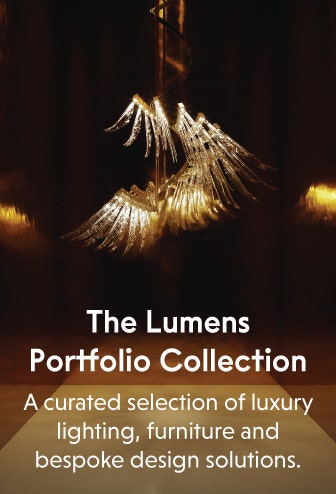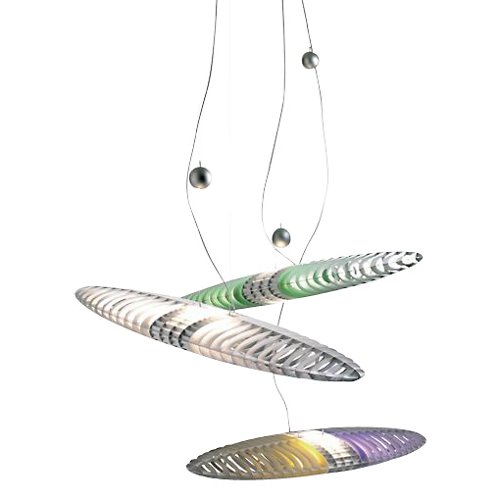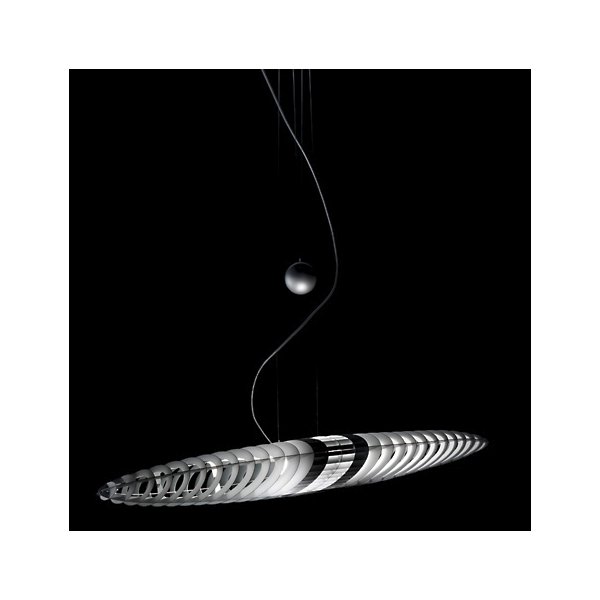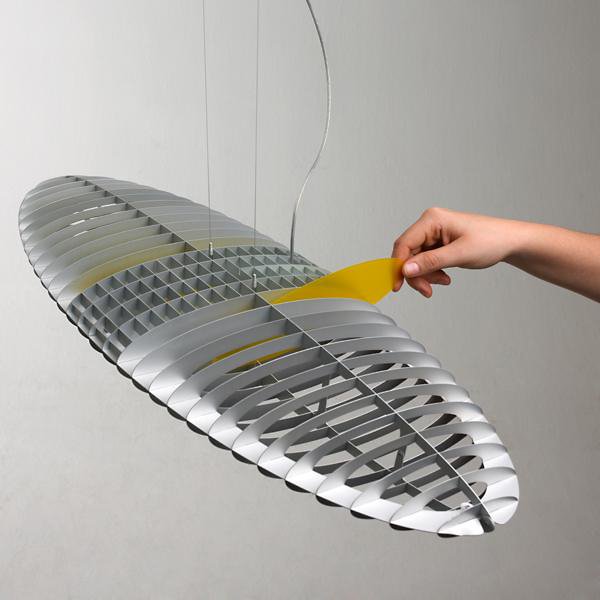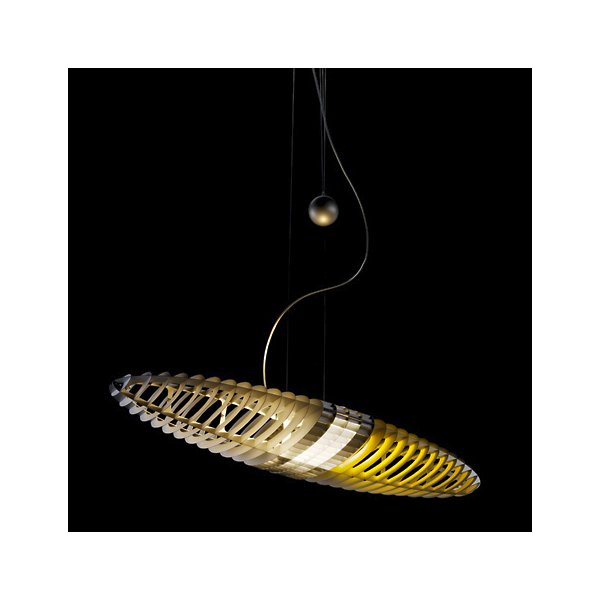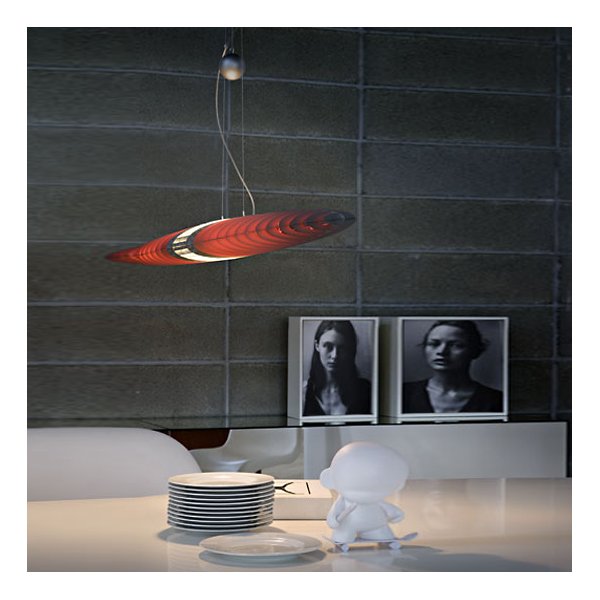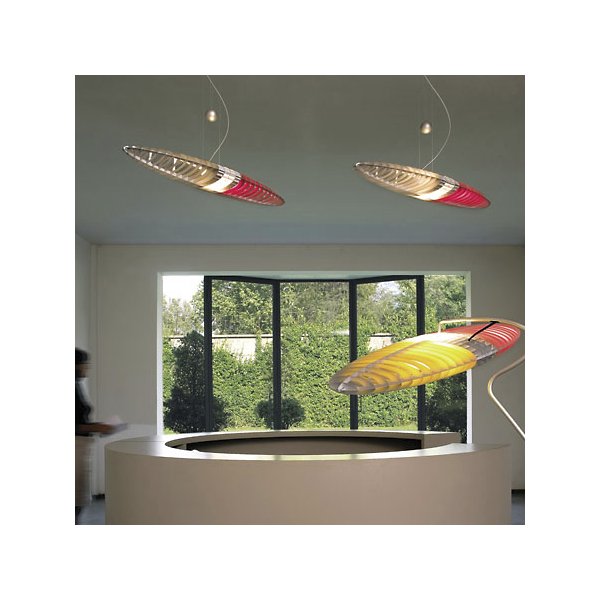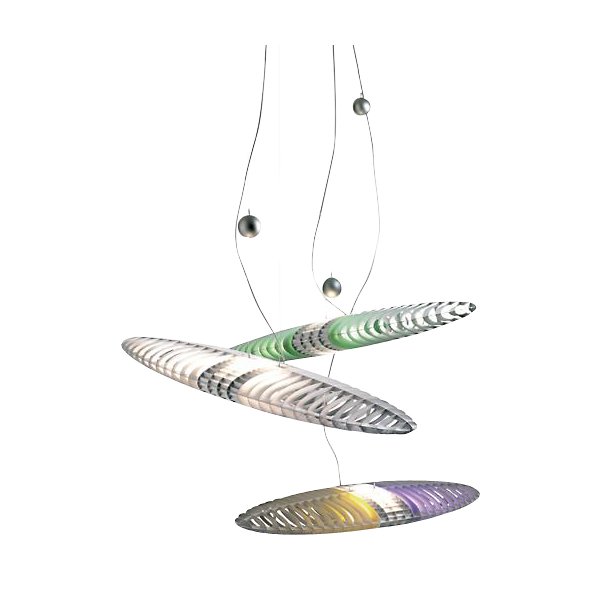Variations
Questions about the Titania?
Our team of design specialists is certified by the American Lighting Association to bring you expert service with a personal touch.

Questions about the Titania?
Our team of design specialists is certified by the American Lighting Association to bring you expert service with a personal touch.

Freight Delivery Options
See What's Available Soonest
Key Features
Designed in 1989 by Alberto Meda and Paolo Rizzatto, the Luceplan Titania is an iconic design piece that serves as both artistic structure and functional lighting fixture. Its unique aluminum composition creates visual drama as the fixture appears transparent when seen from straight on and solid when viewed from the side. Optional colored filters tint the light for an attractive glow while maintaining the fixture's bright, white light.
Founded in 1978 by three Milanese architects, Luceplan's strategy is grounded in design, respect for the environment, and quality.
Key Features
Designed in 1989 by Alberto Meda and Paolo Rizzatto, the Luceplan Titania is an iconic design piece that serves as both artistic structure and functional lighting fixture. Its unique aluminum composition creates visual drama as the fixture appears transparent when seen from straight on and solid when viewed from the side. Optional colored filters tint the light for an attractive glow while maintaining the fixture's bright, white light.
Founded in 1978 by three Milanese architects, Luceplan's strategy is grounded in design, respect for the environment, and quality.
- Designed by Alberto Meda, Paolo Rizzatto
- Made of aluminum lamellar
- Aluminum finish
- Silkscreen printed polycarbonate colored filters
- Adjustable height
- Lead counterweight
- Lighting Style: Indirect
- Location Rating: UL Listed
- Title 24 Compliant: This design is compliant with California's expansive Title 24 energy use regulations.
- Made In Italy
Compare Brightness:
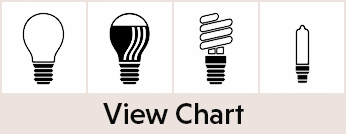
Lumens
The amount of light that comes from a bulb, which has commonly been measured in watts. The more lumens, the brighter the bulb.Wattage
A measurement of the power delivered to a component of an electric circuit (allowing a one-ampere current to flow through the component under the pressure of 1 volt.)Bulb Shape
Bulb shapes are denoted with a letter, which describes the shape, and a number, which indicates the size. The number indicates the diameter of the light bulb at its widest part in eighths of an inch.Base
The part of the bulb that connects to the fixture and its power supply. Bulb bases are denoted with the letter E, and a number which indicates the diameter of the bulb base at its widest part in millimeters.Voltage
Indicates how much voltage a bulb can accept via the fixture it's installed in.Light Color Temperature
The relative color from a light source, measured on the Kelvin temperature scale. Warm light is lower in color temperature (2700-3000 K) and cool, blue light is higher (5000 K).Average Rated Life
The average amount time that a bulb is expected to last.CRI
CRI = color rendering index. This number, which can go from 0 to 100, measures the ability of a light or bulb accurately renders colors. The higher the number, the better, with most quality bulbs these days measuring at least in the 80s.Manufacturer IDs: view
1D1700000520
California Residents: Prop 65 regulations
Titania Technical Files and Diagrams
Show Us Your Style @lumensdotcom
#loveyourlumens
Share photos, find inspiration and shop the customer looks you see here.
View Gallery